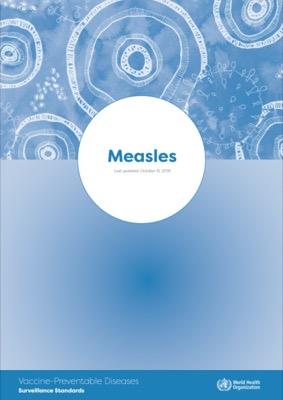Measles: Vaccine Preventable Diseases Surveillance Standards

Overview
Measles is one of the most contagious diseases
for humans. It is caused by a paramyxovirus virus,
manifesting as a febrile rash illness. The incubation
period for measles usually is 10–14 days (range
7–23 days) from exposure to symptom onset.
Initial symptoms (prodrome) generally consist of
fever, malaise, cough, conjunctivitis, and coryza. The
characteristic maculopapular rash appears two to
four days after onset of the prodrome. Patients are
usually contagious from about four days before rash
onset until four days after its appearance.
The exact
source of transmission is frequently unknown because
the patient is often infected by someone in the pre-rash prodrome stage. Measles complications such as
pneumonia, diarrhea and encephalitis can occur in up
to 30% of persons depending on age and predisposing
conditions, such as young age, malnutrition and
immunocompromising conditions. These complications
usually occur two to three weeks after rash onset.
Measles can infect anyone of any age, but most of the
burden of disease globally is still among children < 5
years of age.
